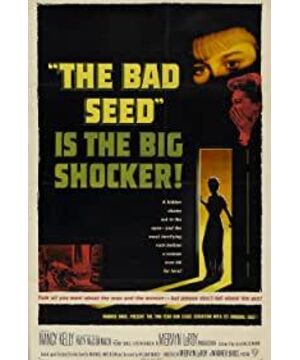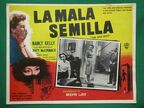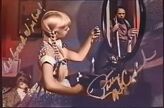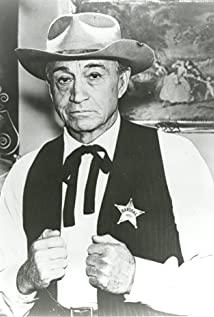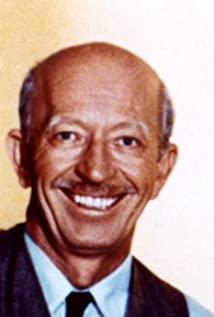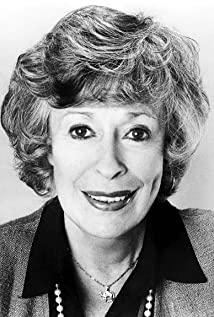. 1. Waters Imagery
Junior Image Dialogue or Psychoanalysis Experiment Class (Film Appreciation Class =_=) Teacher Zhu emphasized the importance of the beginning of a movie. According to what he said about the movie The opening hints at the theme of the whole film, subject imagery and metaphors. Although I don't think this theory applies to all films, the theory does apply to horror-thriller and mystery films. The opening of Bad Seed is cloudy. The densely covered trestle bridges and the waters illuminated by the gloomy moonlight are important images in psychoanalysis. The early hypnotist master Mesmer used water as the connection to the subconscious when he treated his patients. A further (oversee) statement is that the water symbolizes the maternal fluid and the amniotic fluid, so at the beginning of the film, or many semi-narratives with women as the main body, the water is a metaphor for the ethics of bottom-up for a film like Bad Seed that discusses child crimes. Children are supposed to be innocent and pure like water, but Rhoda in Bad Seed is obviously not the case because he is the subject of the biggest conflict and suspense narrative in the film
2. The Psychoanalytic Mania
film was filmed in 1956. The specific time period is unknown. It is assumed that the 1950s coincided with the period when psychoanalysis became the dominant psychotherapy in the United States. Inherited some of the climaxes of the film. The
first scene, the mother Christine, was separated from her husband. The landlady came to say goodbye. Daughter Rhoda The music gets weird.
The second scene Christine sends Rhoda to school for a picnic and then goes home for a psychology seminar with the landlady. The discussion starts with the news of a local killer nurse and they discover Christine's escape from committing crimes with (women) ( The landlord calls this a psychiatry block) According to her, "I'm just naturally so disgusted with guns and drugs." This must be classified as subconscious and defense mechanisms. When the heroine's life experience is revealed at the end of the film, it will become clear that the heroine is like this. The innate disgust comes from the hatred for the killer's mother and the disgust for her own genes. It was also when the serial killer Bessie Denke and the heroine were introduced to the free associate in this scene that she thought "the thing that has bothered me the most for the longest time". Presumably the idea that I might not be my own... This feeling is so obviously different from the worries you had when you were kids" After laying the groundwork for these two key plots, the film reintroduces a third point of conflict The school lunch accident where Rhoda's daughter Rhoda participated Rhoda's rival, a good student, fell into the water The film bundles three key plots into a discussion of psychoanalysis, making the entire film particularly close to psychoanalysis
In the third scene, Christine is well aware of Rhoda's behavior, and her doubts about her daughter's nature make her sleepless. She deliberately arranges a meeting with a novelist who is proficient in criminal psychology and her father, a famous criminal mystery novelist. A father with a child who was born evil gives a very different attitude from another novelist. Here we introduce a viewpoint often discussed in psychology and social sciences, "Nature or Nurture" whether to believe that a child who sins is born bad or nurtured Education causes a psychologist[2] to interpret the film from the perspective of parenting. He/she points out that in the film Rhoda has an overwhelming love and a perpetually distant mother. Soldier fathers who ask family chores The absence of the father's role leaves Rhoda uninhibited. Yet the dissenting voices are equally powerful. Similar homeschooling ends up in very different directions for the children. One sees that "When horror is taken off of the streets and is situated when crime leaves the dangerous corners of society and sneaks into warm private homes we are about to encounter a whole new kind of fear"[1] inside of the nuclear family we find ourselves dealing with a completely new form of terror)
the novelist insists on the innate theory, but Christine's father exposed another truth in his vigorous opposition. This truth is the reason why he believes in the nurture theory but also The starting point of Christian's tendency to naturalism
3. End
uses a paragraph as the conclusion from a document that studies American villain movies. I don't know much about American history. I lack judgment on this type of voice. I put it here for reference only. :
“Youth culture was permitted to flourish after the Great Depression disconnected young people from their traditional economic roles, and enrollment in high school became normalized. The popularization of automobiles also gave teenagers increased mobility and freedom to congregate outside of a supervisory adult gaze. Concerns were Raised particularly in light of an unprecedented national concern over youth crime. "[3]
PS Another point that comes to mind has nothing to do with Leroy's role in the plot, which everyone thinks is inherently stupid but often shows insidiousness to the audience and gives the audience a kind of "maybe" He's pretending to be mentally handicapped as a blindfold" delusion however we end up learning that Leroy is really mentally handicapped but Rhoda/audience being seen through by such a mentally handicapped person/leading the solution to the mystery is an interesting arrangement
[1] Anonymous, The Bad Seed: Nature Vs. Nurture? (2011, October). Retrieved from http://apileofthings.blogspot.com.au/2011/10/bad-seed-nature-vs-nurture.html
[2] Gerald Schoenewolf, The Myth of the “Bad Seed.” (nd). Retrieved from https://blogs.psychcentral.com/psychoanalysis-now/2016/01/the-myth-of-the-bad-seed /
[3] Lennard, Dominic. Bad Seeds and Holy Terrors, edited by Dominic Lennard, State University of New York Press, 2014.
View more about The Bad Seed reviews


